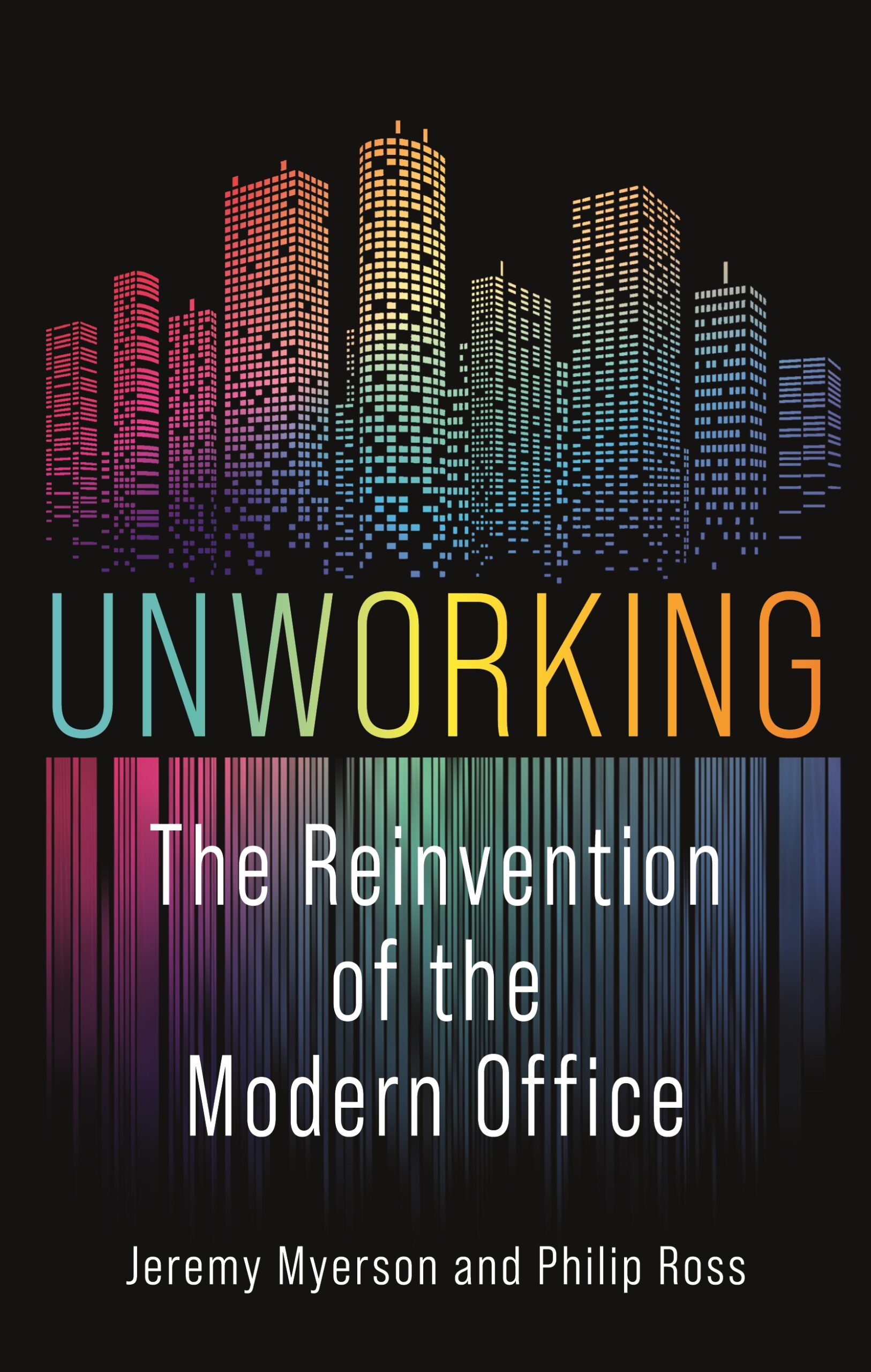
Unworking: The Reinvention of the Modern Office
Over the past hundred years, the office has been integral to the development of modern society. It has shaped the architecture of our cities, the behaviour of our organizations and the everyday movements of millions of people. In 2020, however, the global pandemic brought our attendance in the office to an abrupt halt and triggered a complete re-evaluation of the purpose of the workplace. This book offers a panoramic view of the office and explores what happens next. The authors advance a manifesto for ‘unworking’ – unlearning old habits and rituals established for an outdated office and creating new ones fit for an age of digital technology, design innovation and diverse workforces.
‘This book could not be more timely . . . Essential reading for those planning the new office environment – and anyone who’s going to have to live in it.‘ – Rory Cellan-Jones, former BBC News technology correspondent and author of Always On: Hope and Fear in the Social Smartphone Era
‘Brimming with ideas, insights, examples and wisdom, this is the go-to book for everyone interested in the future of the office.‘ – Lynda Gratton, Professor of Management Practice, London Business School, and author of Redesigning Work
‘Myerson and Ross expertly examine the facets reshaping the office landscape with a view into “What’s Next”.’ – Harald Becker, Director of Customer Engagements and Insights, Microsoft
Unworking: The Latest Coverage

The Financial Times – Offices from the past help us imagine the workspaces of the future

The Sunday Times – How does Gen X manage the warring office tribes?

The Sunday Times – Is your boss a ‘resolute returner’ or a ‘choice champion’ over WFH?

Forbes – How to Lead Gen Z… (and Maybe Even Gen Alpha)
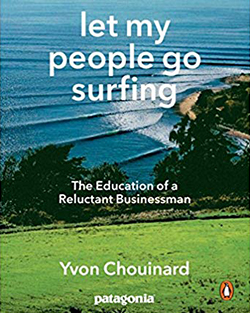
Let My People Go Surfing: The Education of a Reluctant Businessman
Although readers may already know of Patagonia and some of its business practices the likelihood is that they will be somewhat ignorant of the degree to which Chouinard and his team have gone to ensure that the company and their products conformed to the basic ideas behind the business – the care in why, what and how their products are produced, transported and sold and what then happens after all this is done. This book is a series of essays on world ecology and sustainability but also a refreshing look at how a company as successful as Patagonia has been encouraging a work-life balance since its inception.
“Remember, work has to be fun. We value employees who live rich and rounded lives. We run a flexible workplace, and we have ever since we were a blacksmith shop that shut down whenever the waves were six feet, hot and glassy. Our policy has always allowed employees to work flexible hours, as long as the work gets done with no negative impacts on others. A serious surfer doesn’t plan to go surfing next Tuesday at two o’clock. You go surfing when there are waves and the tide and wind are right.”
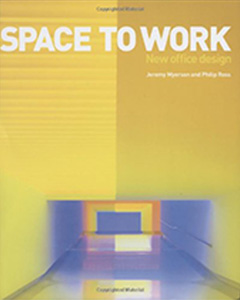
Space To Work: New Office Design
This is the first comprehensive analysis of emerging office design practice to support and enhance the performance of knowledge workers. It explains how the office is being reinvented to respond to the imperatives of knowledge work, as well as the changing social imperatives and technology of the new millennium. A wide range of international workplace architecture and interior schemes that are leading the way in this important area is showcased. The book sets its 43 international case studies within a unique conceptual matrix that provides a framework for thinking about new strategies for reinventing office space. It identifies four `realms’ for knowledge work – the learning campus (ACADEMY); the professional cluster (GUILD); the public workplace (AGORA) and the live-work setting (LODGE). The authors argue that only by finding an entirely new equilibrium at work between the opposing forces of family, colleagues, customers and professional peers can knowledge workers in the 21st century achieve the same productivity gains as manual labour in the 20th century.
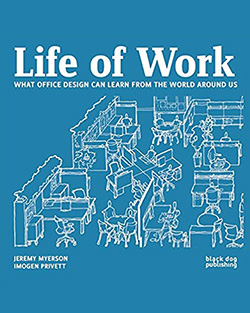
Life of Work: What Office Design can Learn from the World Around Us
This book sets out a template for the future of the workplace by adopting a series of novel perspectives on how office design can learn from other environments in the world around us. Based on a five-year research project between the Helen Hamlyn Centre for Design at the Royal College of Art and Haworth, it takes lessons from the knowledge interactions of the academic library, the emotional landscapes of stage design, flexible temporary events in the city and intensive team environments in air traffic control and emergency medical departments. The book views working life as a combination of process and experience – what we do, and how we feel. By exploring analogous environments, it builds up a whole new picture of the workplace encompassing not only physical settings but also people’s psychological experiences within those spaces. Life of Work offers a framework to escape from the tradition of mechanistic workplaces that are programmed for maximum efficiency without taking into account the human need for comfort and connection.
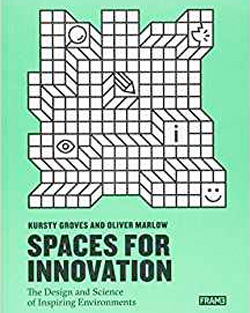
Spaces for Innovation: The Design and Science of Inspiring Environments
A research-based book about the relationship between the physical design of working environments and levels of creativity and innovation. The conversation around the impact of the physical environment on workplace behavior has grown over the past few years. This has been aided by the changing nature of the way we work and the increasing importance of creativity in many industries. Spaces for Innovation explains the relationship between the physical design of working environments and levels of creativity and innovation. Based on the available evidence, Spaces for Innovation identifies the physical characteristics of workspaces that are associated with high innovation potential and determine why they have an effect. A basic framework for the design of innovative environments, a ‘pattern language’ and a practical tool in this book, can be used in analysing ways to enhance physical space in the pursuit of innovation. The book acts as a pattern guide, providing context, examples, inspiration and direction to help businesses explore and understand organisational challenges.
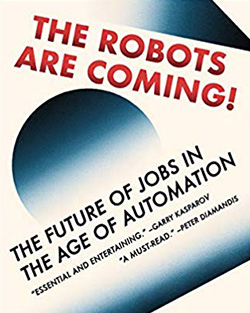
The Robots are Coming! The Future of Jobs in the Age of Automation
The Robots Are Coming! centers around the issue of jobs and their future in the context of rapid automation and the growth of online products and services. As two of Oppenheimer’s interviewees — both experts in technology and economics from Oxford University — indicate, forty-seven percent of existing jobs are at risk of becoming automated or rendered obsolete by other technological changes in the next twenty years. Oppenheimer examines current changes in several fields, including the food business, legal work, banking, and medicine, speaking with experts in the field, and citing articles and literature on automation in various areas of the workforce. He contrasts the perspectives of “techno-optimists” with those of “techno-negativists” and generally attempts to find a middle ground between an alarmist vision of the future, and one that is too uncritical. A self-described “cautious optimist”, Oppenheimer believes that technology will not create massive unemployment, but rather will drastically change what work looks like.
